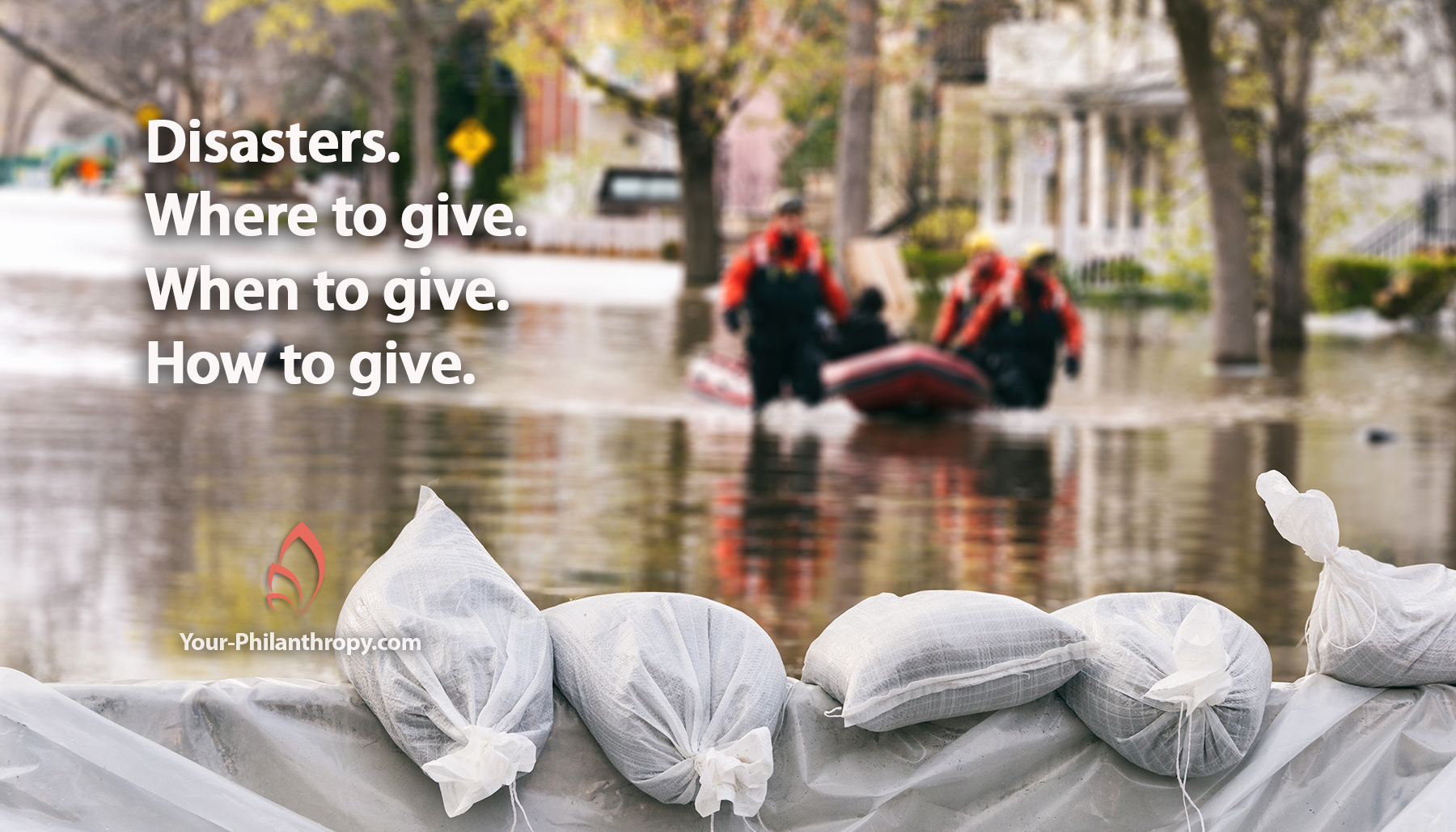Disasters have been coming at us, roaring across our TV’s. There is little rhyme or reason and even less sensible explanation for why now, why there, why here. Texas, Florida, California, Puerto Rico and even Las Vegas. With so much loss of human life, personal belongings, financial infrastructure, how can we avoid being overwhelmed yet reach out and help?
First, turn off the TV news. As donors, we need a different filter to sort out how to best help in disasters. Once you have necessary details, lives lost, personal dreams ripped from their foundations, financial ruin to families and businesses, you probably have the facts you need to make the first decision, to donate.
Next, decide how to make your gift meaningful and impactful. It’s okay if it is one or the other, both are great. Your decision to help a few or to help many belongs only to you. Your decision to give to small grassroots organizations or large national organizations is your decision.
Sitting at lunch with friends recently our conversation turned to the most recent event – wildfires in Napa Valley. Several of us knew someone who lost entire wineries in minutes to the flash fires in the Napa and Sonoma County. And here in Texas, we all knew friends or family who lost everything when Hurricane Harvey laid waste to 29,000 square miles.
At times like these, when disasters come so close together, heading out into the beautiful fall weather might be easier than making a decision.
Here are three suggestions to get past those overwhelmed feelings and move forward.
Where to Give
Start by asking yourself if you personally know someone in one of the affected areas. Do you want to help family, friends, or someone related to a co-worker? Decide how to best get money or personal supplies to them directly. Invite other family, friends or co-workers to join you. Decide on a disaster area that has the most connections to you or your business.
When to Give
Decide the kind of result you want. Do you want to help right now, in the next 48 hours or two weeks from now when the disaster has faded from the memory of most, and yet is still real for those living amid personal and financial destruction? Mayor Sylvester Turner estimated that Hurricane Harvey created about 8 million cubic yards of trash, estimated to fill 239 Olympic swimming pools. At the end of September, he indicted debris pick up would be completed within 90-120 days. Past Thanksgiving, past Christmas, past New Year’s Day, for some areas maybe even past Ground Hog Day.
How to Give
Make this decision last. Is it a check to an organization working in the area you want to help; is it gathering personal items to be taken in by you or a volunteer making a trip to the affected area? When giving to an organization, vet them in as many ways as possible. Check out the Better Business Bureau’s Accredited Charity Directory in the area where you want to help.
Note: International disasters may require additional filters. That’s a discussion for another day. Until then, check out another one of my blogs on the subject.
Each big decision will bring more questions. But, once you have filtered your thoughts and feelings you will have a direction. It beats the frustration of not knowing where to start.
Still, with one after another disaster coming so close together, you may experience the fear of giving too much now with no resources left for the next disaster. Or you might want to save some back so you will be able to respond to the next one. Such thoughts drift through our minds as we face the decision of how much and when.
My suggestion is to give what you can now and what you can later.
In Florida Governor Richard Scott activated the Florida Disaster Fund two days ahead of Hurricane Irma asking for a mere $10 donation by texting DISASTER to 20222. In Texas, the Red Cross encouraged a $10 donation by texting HARVEY to 90999.
Helping by text is fast and immediate. There will be more opportunities to give whether from snail mail, social media, or word of mouth. Take your time, one disaster at a time.
How do you decide?


0 Comments